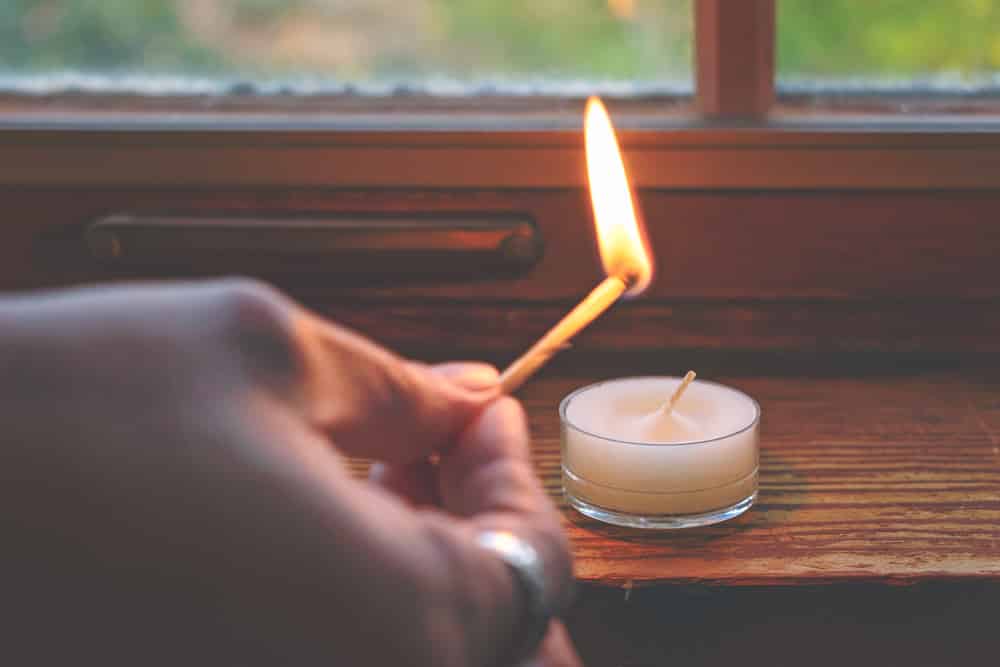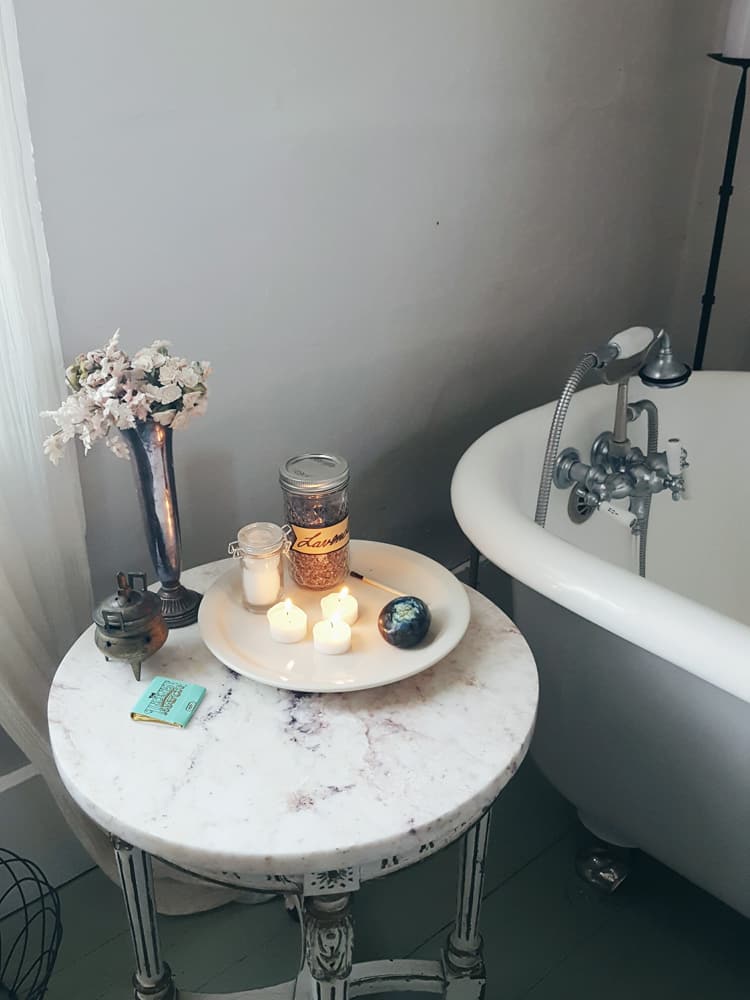As the calendar turns from the new year into February, many witches and pagans celebrate the festival of Imbolc. For some, this is a holy day of celebration and communing with the goddess.
For others, it’s the harbinger of coming spring, an opportunity to tune into the lessons and wisdom that have come into your life since the start of fall, nearly six months ago.
Whether you identify as a witch or pagan yourself, or if you’re merely curious how this festival can support your mental and emotional health, Imbolc is a wonderful time to get in tune with the natural rhythm of the seasons and start nourishing yourself with intention and compassion as we step into the season of new beginnings.
What is Imbolc?
In the 20th century, modern pagans devised a series of eight holidays, called sabbats, that collectively became known as the Wheel of the Year.
These holidays are based on or inspired by ancient festivals found primarily in Celtic lands and Germanic Europe and celebrate the turning of the seasons throughout the year.
It’s important to note that these eight festivals were never celebrated all together in this way at any point in ancient history, but they do serve as a powerful set of markers for our spiritual connection to the earth, the passing of time, and our own intuitive self-care.
There are two festivals per season: one solstice or equinox and one called a fire festival, because they were traditionally celebrated with candles and bonfires.
Imbolc is the winter fire festival. It’s usually celebrated on February 1st or 2nd in the Northern Hemisphere and is a celebration of the slowly-lengthening days and the promise that spring is coming.
It is typically celebrated with milk and cheeses, lots of candles, and is often associated with the Celtic goddess Brigid.
How to Pronounce Imbolc
The name, Imbolc, is derived from the Irish Gaelic word oimelc, meaning “ewe’s milk.” The modern name is pronounced “im-bowl-k” or sometimes “im-bowl-g”.
This was around the time of year that the female sheep, (ewes), would birth their lambs and begin producing milk. This milk served as a vital source of nutrients for our ancestors and was also a sign that spring was on its way.
In ancient times, Imbolc was not celebrated on a specific calendar date. Rather, it might have been celebrated as soon as the first lambs were born or perhaps on the first full moon after lambing season had begun.
That’s why it’s really not important to celebrate Imbolc, or any of the fire festivals, on their exact date on the calendar, but rather to think of it as an entire season of celebration, alignment, and tuning into what your mind, body, heart, and spirit are truly in need of at this time.
The Symbolism of Imbolc
Okay, so let’s be real, an ancient milk festival in celebration of newborn lambs isn’t the most relatable thing in the world. (Although it does sound pretty adorable.)
To understand why Imbolc is actually one of the best times of the year for focusing on self-care, we need to look at the metaphorical meaning of the season.
Imbolc is all about the seeds that are growing beneath the surface in the winter, waiting for their moment to sprout. The earth may appear dormant still, but there is life beginning to stir beneath the snow and mud. Soon, new life will be born – lambs and flowers, yes, but also ideas, projects, creativity, and confidence.
Imbolc is the spark of new life and fresh perspectives that are to come in the spring. It’s also the final opportunity to reflect back on the wisdom that has come up for us since the start of fall back in September.
Throughout fall and winter, we energetically turn within to rest, reflect, and connect with our intuition. Imbolc is the opportunity to reflect back on that time and integrate the lessons and reflections that have come through.
Imbolc Correspondences to Help You Celebrate
Imbolc Colors: White, Yellow, Gold
Imbolc Crystals: Clear Quartz, Aura Quartz, Citrine
Imbolc Plants: Bay Leaves, Chamomile, Lavender
Imbolc Foods: Milk, Soft Cheeses, Bread
Self-Care at Imbolc
Self-care at Imbolc is all about physical nourishment, reflection, fostering the light within, and, for some, connecting with goddess energy. Let’s take these one at a time:
Physical Nourishment
Physical nourishment is an important component of Imbolc. Our skin can become dry and cracked in the cold, winter months so it’s important to care for ourselves physically during this time.
Physical nourishment isn’t just for our physical self-care, however. Nourishing our bodies is a powerful form of emotional, mental, and spiritual self-care as well.
The milk that is typically enjoyed at Imbolc celebrations is wonderful for the skin; soaking in a milk bath in the tub is a luxury befitting Cleopatra.
Add rose or neroli oil or fresh or dried lavender buds for an extra dose of natural luxury. You can also soak your hands or feet in warm milk for a wonderful treat that’s accessible for those without a bathtub!
Nourishing your body in this way is great for getting grounded in your physical self. Winter is the season of grounding, an opportunity to return to our roots and nourish our physical foundations.
Our bodies carry us through our lives, some days more easily than others, but always as the foundation of our human experience.
In addition to cow’s or sheep’s milk, it’s also perfectly acceptable to substitute almond, soy, or oat milk for making delicious lattes, panna cotta, or other creamy confections to consume.
Reflection
Reflection is an essential component of self-care at Imbolc. The fall and winter months are the most intuitive time of the year, when we go within in order to receive wisdom and guidance from our intuition, our higher selves, our spirit guides and ancestors, and even from the divine, depending on your beliefs.
It’s important to get grounded in everything that has come through for you during the past few months of hibernation, however you’ve experienced them and whether or not you’ve been intentionally connecting with your intuition.
Take this opportunity to reflect back to late September of last year. What were you doing and who were you being as the days grew shorter and colder at the autumn equinox?
It can be very powerful to do this 4-6 month reflection on a regular basis and especially at Imbolc, before we emerge from this dark, intuitive time of the year and into the bright, fresh energy of the springtime.
We think nothing really changes in just 6 months but we are actually capable of amazing, quantum shifts in such a short amount of time.
I highly recommend doing some journaling and meditation to help you really dig into the messages that have come through for you over the winter. What key takeaways do you know you are meant to integrate and bring into your reality in the next season of life?
Fostering Your Inner Light
Imbolc is a fire festival and is traditionally celebrated with lots of flickering, white candles. In fact, the Catholic Church version of the festival is even called Candlemas. The classic Imbolc candle rituals involve filling your altar, or a table or mantelpiece, with candles.
Then, light candles and turn off all other light sources to bask in their warm glow and share simple, delicious foods on a cold winter’s night.
The glow of a candle in the darkness symbolizes two important parts of the Imbolc season: first, the promise that the sun is slowly returning to its strength. The winter solstice, six weeks ago, was the sun at its lowest point of the entire year – the shortest day and longest night of the year.
Since then, the nights have slowly been getting shorter, but the number of dark hours is still longer than the number of daylight hours.
It won’t be until the spring equinox in March that we will see the sun finally regain its strength and overpower the darkness, when the days will begin to be longer than the nights. We bring light to the darkness of winter to remind ourselves that the sun will return.
The candlelight also represents the spark of fertile, creative energy at this time of year. New life is being born in the form of baby animals and sprouting seeds, even if they are still buried beneath snow or mud. We have to have faith that spring will come and our energy and vitality will be restored.
Lighting candles at Imbolc around your home is a beautiful way to not only symbolize the return of light and life to the natural world around us but also within us.
Whether you light a single candle and meditate on its quiet flame, fill your bathroom with candles for a luscious ritual bath, or perform a traditional Celtic Imbolc ritual, know that the light you bring to the darkness will light your own way toward inspiration and truth.
Goddess Worship at Imbolc
Another important aspect of Imbolc for many pagans is connecting with the goddess. Not all witches and pagans worship goddesses and many are actually agnostic or atheist, so this is not a required part of celebrating Imbolc or any other festival.
However, Imbolc is often associated with the Celtic goddess, Brigid, (also spelled Brighid or Bride) from Celtic mythology.
Brigid was one of the most beloved Pagan goddesses of pre-Christian Ireland, so much so that when the Celtic isle was forced to convert, she became a saint who is still very popular to this day.
She is associated with healing, wisdom, and animals and is often connected with sacred flames and healing wells. She is sometimes also thought to be a representation of the triple goddess, the pagan concept of a single goddess who represents the maiden, the mother, and the crone – three facets of the divine feminine.
Imbolc is connected with Brigid because the feast day of Saint Brigid, the Catholic version of the ancient goddess, is also February 1 so many pagans reclaim this day of celebration and worship as a pagan holiday.
One of the most traditional ways of connecting with Brigid on this day is to make Brigid crosses, a simple craft made from weaving grasses into a beautiful cross shape.
If you choose to work with goddess energy for your Imbolc rituals, Brigid can be a wonderful support for healing work and receiving guidance and wisdom from animals and animal spirits.
Regardless, celebrating Imbolc Candlemas with the intention of self-reflection and self-care is a special way to move into spring and the rest coming year with clarity. It’s like a spring cleaning for the soul. If you’re curious to learn more about festivals, astrology, and other witchy things, check out all our other blog posts here!
















5 comments
Love the focus on Self-care… Imbolc is one of my favourite feast days, so marking it like this feels so good. Thank you for this article.
I love it! Thanks for your tips
Thank you for the article. I enjoyed it very much.
Great article. Very useful tips on self-care and reflection. I found them incredibly helpful.
Just what I was searching for, thanks for posting.